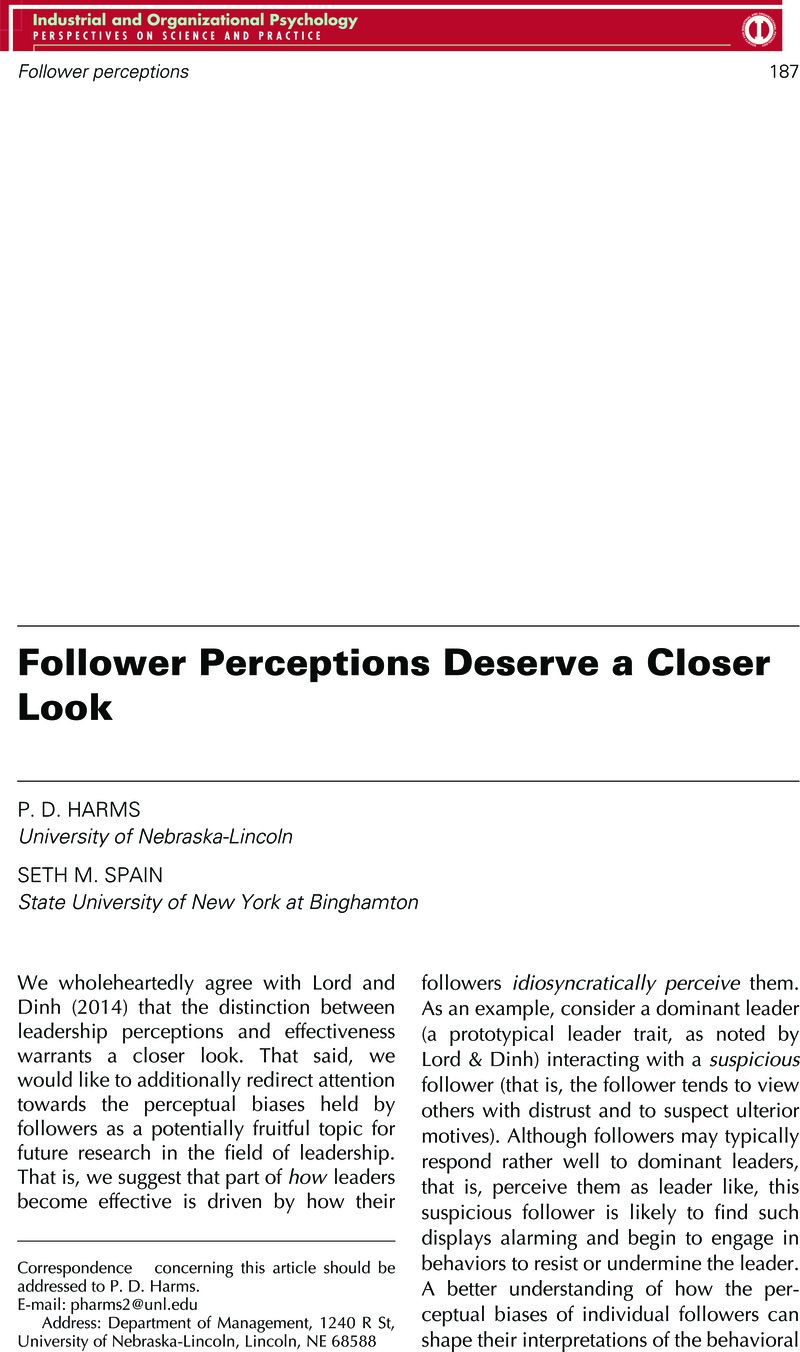Crossref Citations
This article has been cited by the following publications. This list is generated based on data provided by Crossref.
Hollander, Edwin P.
2014.
Conceptions of Leadership.
p.
201.
Naber, Andrew M.
and
Moffett, Richard G.
2017.
Follower moral reasoning influences perceptions of transformational leadership behavior.
Journal of Applied Social Psychology,
Vol. 47,
Issue. 2,
p.
99.
Harms, P.D.
Vanhove, Adam
and
Luthans, Fred
2017.
Positive Projections and Health: An Initial Validation of the Implicit Psychological Capital Health Measure.
Applied Psychology,
Vol. 66,
Issue. 1,
p.
78.
Feldman, Joseph A.
2018.
An archival review of preferred methods for theory building in follower research.
South African Journal of Economic and Management Sciences,
Vol. 21,
Issue. 1,
Harms, P. D.
Krasikova, Dina V.
and
Luthans, Fred
2018.
Not Me, But Reflects Me: Validating a Simple Implicit Measure of Psychological Capital.
Journal of Personality Assessment,
Vol. 100,
Issue. 5,
p.
551.
Rego, Arménio
Yam, Kai Chi
Owens, Bradley P.
Story, Joana S. P.
Pina e Cunha, Miguel
Bluhm, Dustin
and
Lopes, Miguel Pereira
2019.
Conveyed Leader PsyCap Predicting Leader Effectiveness Through Positive Energizing.
Journal of Management,
Vol. 45,
Issue. 4,
p.
1689.
Spain, Seth M.
2019.
Leadership, Work, and the Dark Side of Personality.
p.
95.
Spain, Seth M.
2019.
Leadership, Work, and the Dark Side of Personality.
p.
123.
Bunea, Emilia
Kark, Ronit
and
Hammond, Michelle
2023.
“Leisureship”: Impact of pursuing serious leisure on leaders' performance.
Human Resource Management Review,
Vol. 33,
Issue. 2,
p.
100950.





